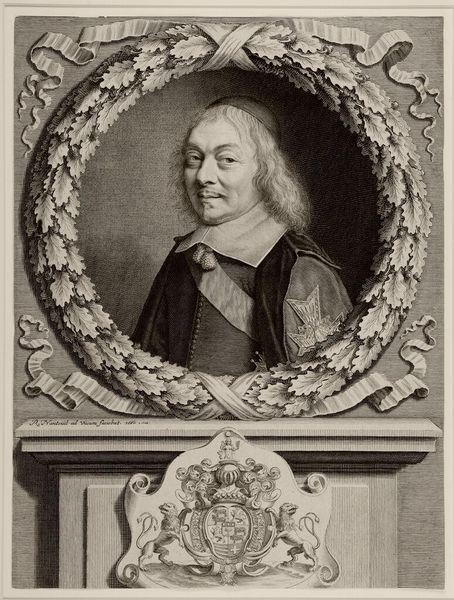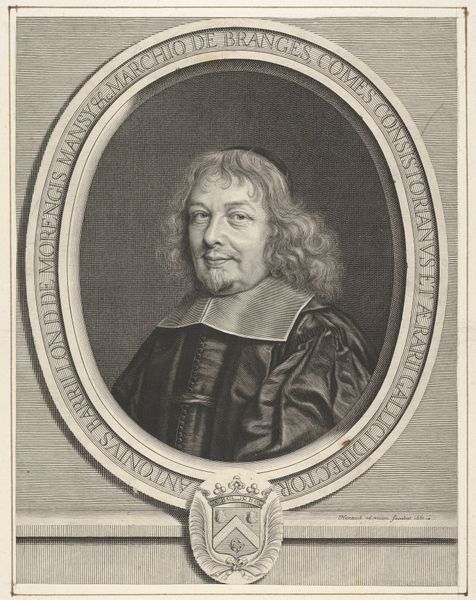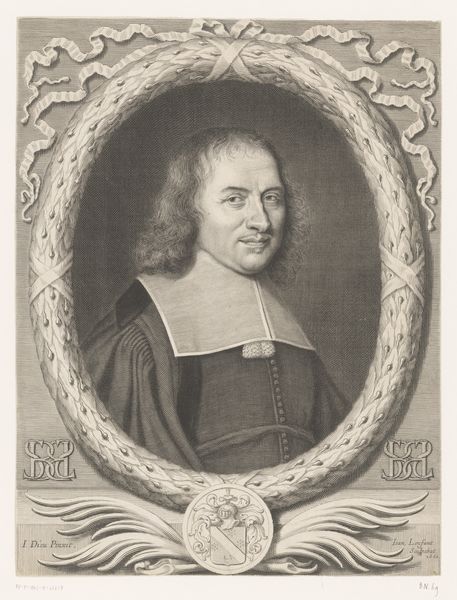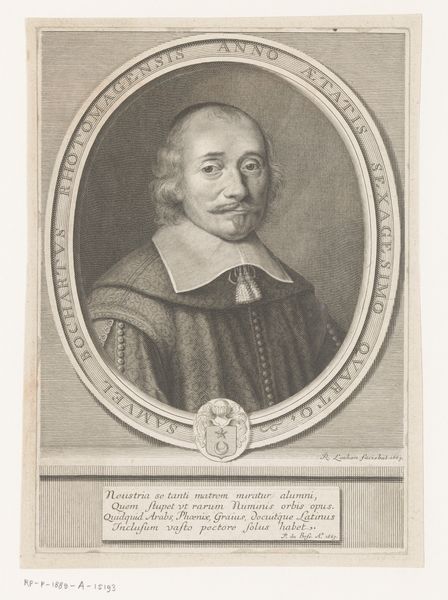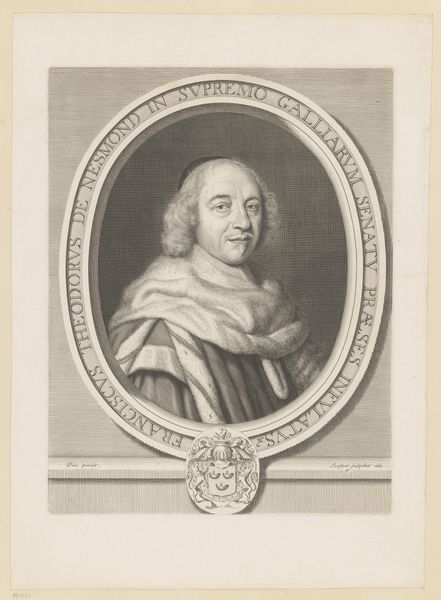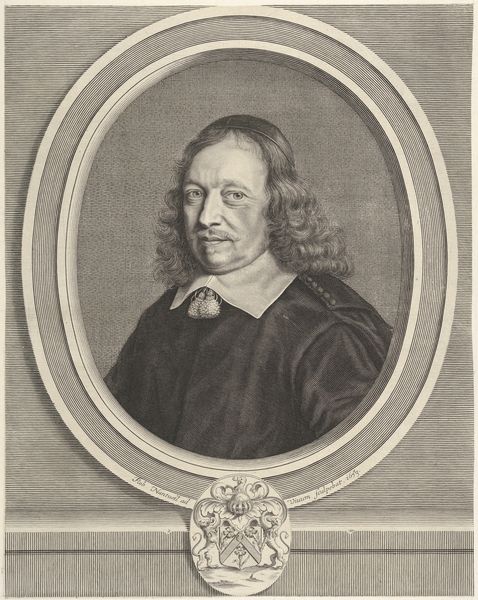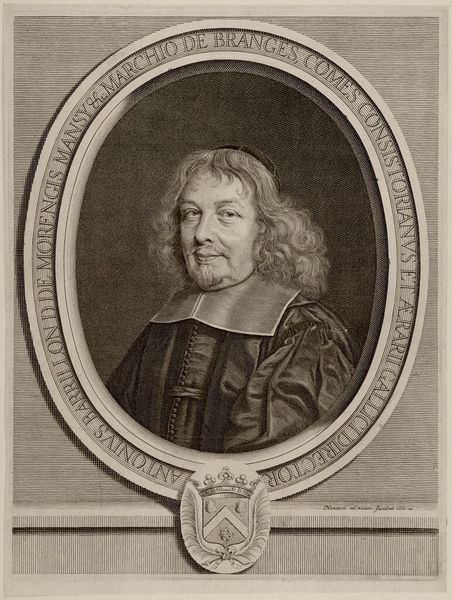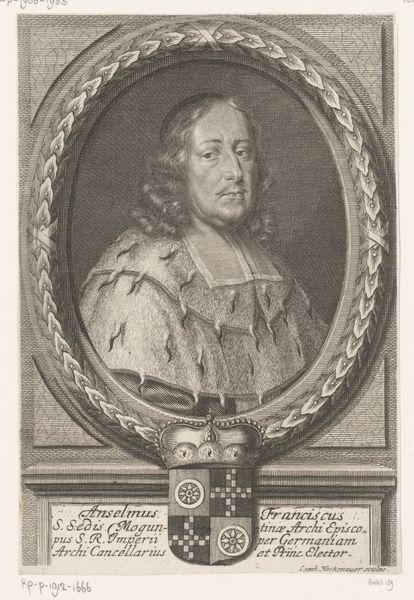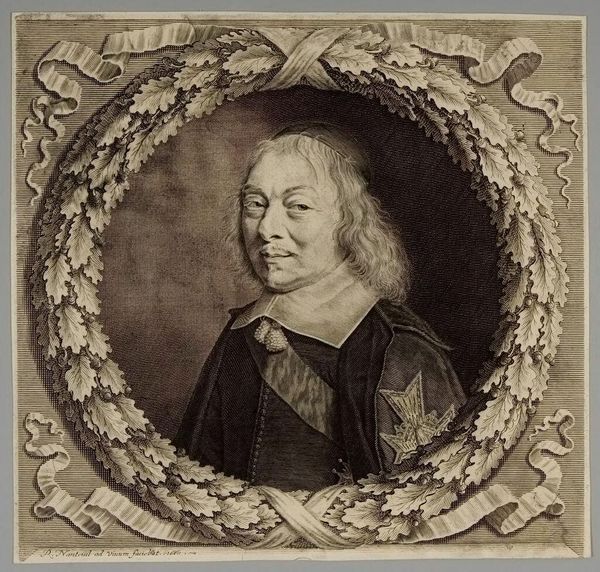
drawing, print, engraving
#
portrait
#
drawing
#
baroque
# print
#
charcoal drawing
#
engraving
Dimensions: Sheet: 13 3/4 × 10 1/2 in. (35 × 26.7 cm)
Copyright: Public Domain
Editor: So, we're looking at Robert Nanteuil's engraving of "Henri-Auguste de Loménie, comte de Brienne" from 1660. It's incredibly detailed, especially considering it's a print. How do you see this piece? Curator: The first thing that strikes me is the process of its making. Think about the labor involved in creating such detail on a copper plate. Each line meticulously etched, controlling the flow of acid, wiping the plate. The *means* of production were intensely physical, demanding great skill. We tend to elevate the image itself, but what about the material practice? Editor: That's fascinating! I never really considered the physical effort so much. How does that impact our understanding of the artwork itself? Curator: It challenges our romantic notion of the "artist." Nanteuil wasn't just expressing an idea; he was a skilled artisan, part of a system of production. His tools, his workshop, the economics of printmaking – all are essential to understanding the work's creation and distribution. Where do drawings like this fit into the grand scheme of portraiture when wealthy aristocrats also commisioned painted portraits? Editor: That makes a lot of sense. And the fact that it's a print, made to be reproduced, shifts it away from being a unique object like an oil painting. Curator: Precisely! The social context is crucial. Prints democratized portraiture, making images of prominent figures available to a wider audience. This shifts our focus from solely appreciating "high art" to exploring the networks of exchange that distributed and consumed images. It highlights issues of class and consumption. Editor: I guess I was so focused on the face and the expression, I wasn’t even considering how this print would have circulated within society at that time. Thanks for that! Curator: The materiality informs its meaning. I now wonder where these prints were placed?
Comments
No comments
Be the first to comment and join the conversation on the ultimate creative platform.
